
Front_Office_Operations
.pdf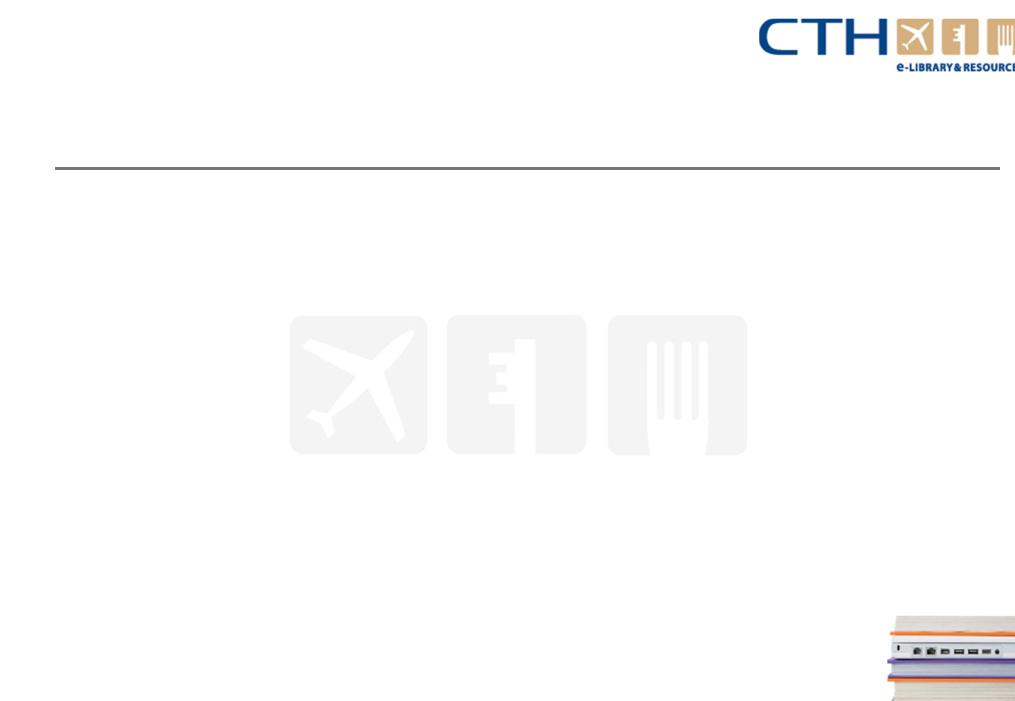
Chapter 2 – Reservation procedure
Computerised reservations
3.1 How computerised reservations work
Fortunately, computerised reservations work much in the same way as the manual systems discussed above. The same kinds of information need to be recorded, and the same kinds of displays and records need to be available, for the same reasons. Mostly, however, the displays will look different on screen - and you will have to learn to navigate within a system to ‘find’ the pages/records/functions you want to use at any given time.
If you get a room enquiry, you will need to:
●Access the Advance Reservations or Reservations part of the programme. There will usually be a 'main menu' or 'home' screen, giving you options as to which type of programme you want to enter.
●Access the Room Availability display, and type in the dates you are interested in, The screen will show room availability data, usually in the form of a table displaying the numbers of each room type Available. This is a bit like a density chart, except that instead of adding 'scores', the computer software simply updates the running total for you as new reservations.
www.cthresources.com |
Page 111 |
|
www.cthawards.com |

Chapter 2 – Reservation procedure
Computerised reservations
3.1 How computerised reservation works
●Having established room availability for the enquiry, you can access the Bookings section of the programme, which is like an on-screen version of the Reservation Form. You can therefore add the guest details and a tariff code or terms, You can usually add a range of other information: a reference identifying a group booking (so that the rooms can be checked-in and checked-out together); the company (if any) paying for the booking, so that it can be billed direct; special requests and prebooked extras; how the booking has been made, whether it has been guaranteed and confirmed and so on. At this point, try to allocate a particular room to the booking, if this is the hotel's policy,
www.cthresources.com |
Page 112 |
|
www.cthawards.com |

Chapter 2 – Reservation procedure
Computerised reservations
3.1 How computerised reservations work
Once the booking has been entered into the system, the software can use the data to process a wide range of linked reports, updates and displays.
●The room availability data is adjusted to take account of the newly booked room, and if a specific room has been allocated, it is 'blocked' so that it does not show up as available for anyone else (i.e. the software acts as both a density chart and a conventional chart): Figure 2.9.
●A room control chart can be produced, for an at-a-glance display of the status of each room: not just in terms of bookings, but availability for guest arrival/allocation (e.g.. if a room is currently being cleaned), as a trigger for further action (e.g.. room moves, billing, departures, etc)
●An arrivals list, group arrivals list and VIP/Special Attention Guests list can be prepared (and kept up- to-date) for each day, allowing front staff to plan for check-ins.
●Cancellations can be processed in one operation – simultaneously deleting all records related to the reservation (without the need for crossing out or Tippex in the daily diary, conventional chart, guest record and so on)
www.cthresources.com |
Page 113 |
|
www.cthawards.com |
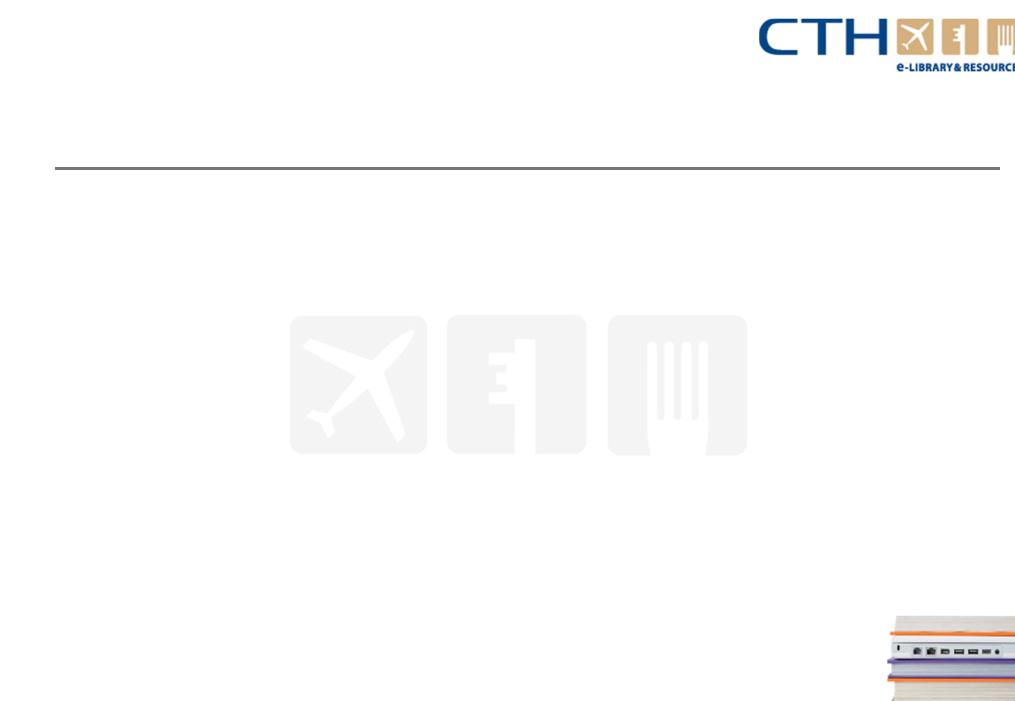
Chapter 2 – Reservation procedure
Computerised reservations
3.1 How computerised reservations work
●The guest details can be used in various ways: linked to word processing programmes (to input all the bookings details on a confirmation form or letter, say); searched by name (e.g.. if someone enquires about a guest who has not yet arrived); searched by group (e.g.. if you want a list of group members for other purposes e.g.. restaurant bookings); searched by type or status (e.g.. if you want to
compile a list of expected VIPs – or ‘black listed’ individuals); and so on.
●The booking details will be automatically linked to other programmes, which carry out the tasks (check-in, check-out, billing and payment, guest history records, yield management and so on)
www.cthresources.com |
Page 114 |
|
www.cthawards.com |

Chapter 2 – Reservation procedure
Understanding rooms and rates
4.Understanding rooms and rates
4.1Room and bed types
4.2Room rates or tariffs
www.cthresources.com |
Page 115 |
|
www.cthawards.com |
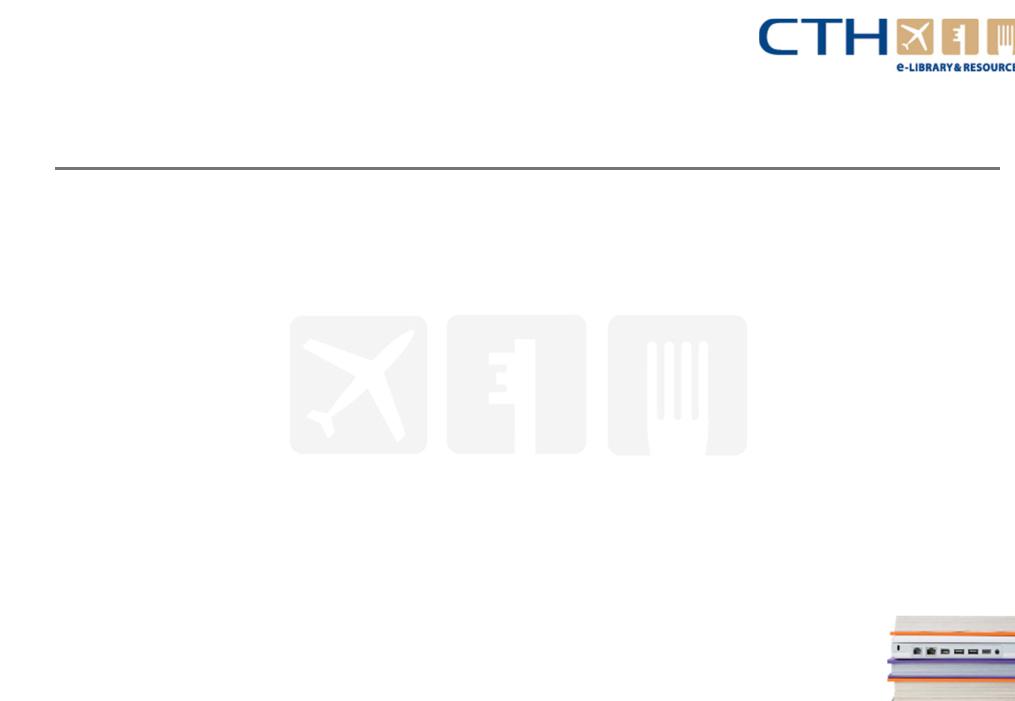
Chapter 2 – Reservation procedure
Understanding rooms and rates
4.1 Room and bed types
Hotel accommodation varies in different ways:
●By grade or standard, depending on size, decor and furniture, location/view and in-room facilities. (e.g.. A hotel may classify its rooms as standard, superior and deluxe - or have its own special terminology to describe different grades). Customers are unlikely to know what these descriptors mean, so reservations staff will have to be able to describe the amenities provided by each grade of room - and the value added at each higher grade: superior rooms are larger, say, or have ensuite bathrooms, or mini-bar facilities.
●By number and size of beds per room. This is the main way in which prospective guests will enquire about rooms.
|
Type of room |
Number of beds per room |
Size/width of bed |
Occupants per room |
|
Single |
1 (single bed) |
3 feet |
1 |
|
Twin |
2 (single beds) |
3 feet |
2 - but may be let for single occupancy |
|
Double |
1 (double bed) |
4 ft 6 inches |
2 - but may be let for single occupancy |
|
Queen |
1 (queen size) |
5 feet |
2 - but may be let for single occupancy |
|
King |
1 (king size) |
6 feet |
2 - but may be let for single occupancy |
|
Family |
3+ (double plus singles or bunks) |
|
3+ |
www.cthresources.com |
|
Page 116 |
|
|
|
|
|
www.cthawards.com |
|
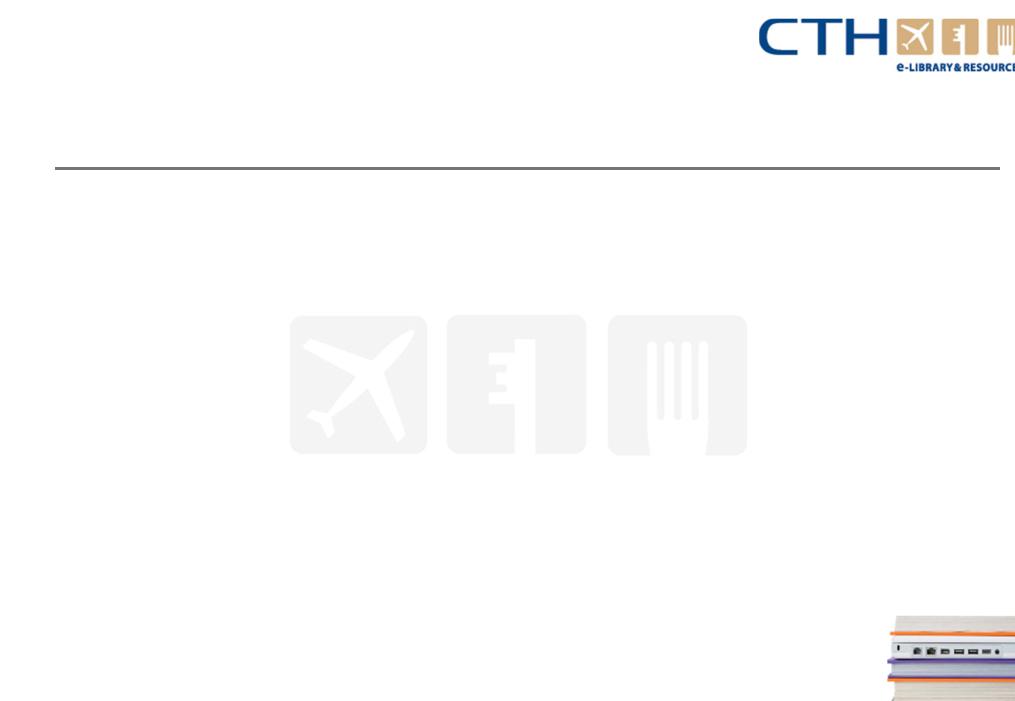
Chapter 2 – Reservation procedure
Understanding rooms and rates
4.1 Room and bed types
Hotel accommodation varies in different ways: continued…
● By target customer. Some hotels offer special types of accommodation for particular types of customer.
–There may also be 'presidential suites' or 'penthouses' for VIP and wealthy guests: usually a suite of rooms, which are spacious and decorated to a very high standard.
–There may be areas of the hotel designated for female travellers only (for their comfort and security), or for smokers (to avoid placing non-smokers in rooms which have absorbed tobacco smells).
–A hotel with a high proportion of business trade may set aside 'executive floors', with room types and facilities specially catering to the needs of business travellers: meeting rooms, communication facilities, lounge and bar for client entertaining and so on.
www.cthresources.com |
Page 117 |
|
www.cthawards.com |
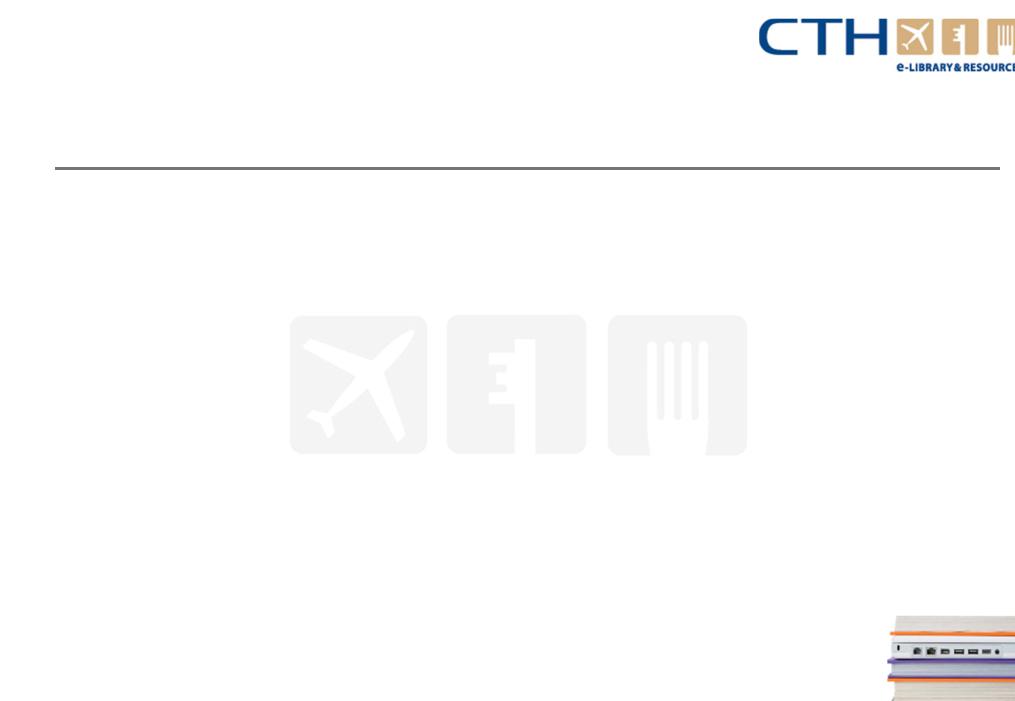
Chapter 2 – Reservation procedure
Understanding rooms and rates
4.2 Room rates or tariffs
The rate for any given room may also vary, according to:
●The day of the week. Occupancies may be higher from Monday to Thursday for hotels with a high proportion of business guests, so it may set a lower 'weekend rate' to attract guests on the weekends. For tourist hotels, conversely, a lower 'weekday' or 'mid-week' rate may be set to attract business during the week.
●The season and seasonal demand. Discounted seasonal rates may be set to increase occupancy in 'out of season' months; while higher 'peak season' rates get the maximum revenue from high demand.
●The customer: discounted rates may be offered to attract corporate/business travellers (who may bring in high volume business), e.g.. tour groups or travel agency business,. It is, obviously, important for front office staff to be aware of the different room rates - and who is eligible for discounted rates – in order to quote accurate and attractive rates to guests (while also seeking to maximise the revenue earned by the hotel, an issue we will return to in detail in Chapter 6).
www.cthresources.com |
Page 118 |
|
www.cthawards.com |

Chapter 2 – Reservation procedure
Understanding rooms and rates
Different terminology is used for different types of room tariffs. The most common ones are:
|
Rate |
|
Comment |
|
Rack rate |
The standard 'full' rate for the room, without inclusions (e.g.. meals), discounts or reductions |
|
|
Corporate rate |
The standard rate charged to corporate (business) customers |
|
|
Commercial rate |
A rate negotiated between the hotel and a business customer, for all its individual room reservations |
|
|
|
The rate at which children will be charged if they share the same room as their parents (up to a |
|
|
|
specified |
|
|
Children's rate |
age limit): often free or at a nominal rate |
|
|
|
The discounted rate for members of the hotel's loyalty scheme, intended to increase repeat business |
|
|
|
for |
|
|
Loyalty rate |
the hotel |
|
|
|
The flat rate per room agreed in advance by the hotel and a tour or conference group, regardless of |
|
|
Flat or group rate |
variations in rack rates for different rooms |
|
|
Airline / agency |
The rate negotiated between an airline, travel agency or tour operator and the hotel, based on the |
|
|
rate |
volume of business the hotel gets or anticipates |
|
|
|
The standard rate for a room reserved via the Internet, usually at a discount on rack rate, because of |
|
|
|
the |
|
|
Online rate |
money the hotel saves on administration, which can be passed on to the guest |
|
|
|
A discounted rate offered to individual guests or groups with the inclusion of some meals, as an |
|
|
Packaged rate |
incentive to boost occupancy in periods of low demand. |
|
|
www.cthresources.com |
A discounted rate offered for booking a minimum of 28 days in advance of arrival (With no |
|
|
amendments |
Page 119 |
|
|
Advance purchase |
www.cthawards.com |
|
|
rate |
or cancellations allowed). |
|
|
|
||

Chapter 2 – Reservation procedure
Understanding rooms and rates
Inclusive and non-inclusive tariffs
Four main types of tariffs are generally available to take account of the inclusions of meals and other extras, and the terminology used varies. It is worth your knowing the different terms, to avoid confusion.
UK terminology |
US term |
French term |
Inclusions |
|
|
|
None: the rate quoted is for the room only, whether |
Room only |
European Plan |
|
on a per person or per room basis. |
|
|
|
The rate includes room plus breakfast. (May specify |
Bed & breakfast |
|
|
inclusion of a cold or continental breakfast only, |
(B&8) |
Continental Plan |
|
with a cooked or English breakfast at extra charge.) |
Half board or |
Modified American |
|
The rate includes room, breakfast and one main |
semi-inclusive |
Plan (MAP) |
Demi-pension |
meal (in the UK, usually dinner). |
Full board or |
Full American Plan |
|
The rate includes room and all main meals (and |
fully-inclusive |
(FAP) |
En pension |
sometimes also afternoon tea). |
www.cthresources.com |
Page 120 |
|
www.cthawards.com |
